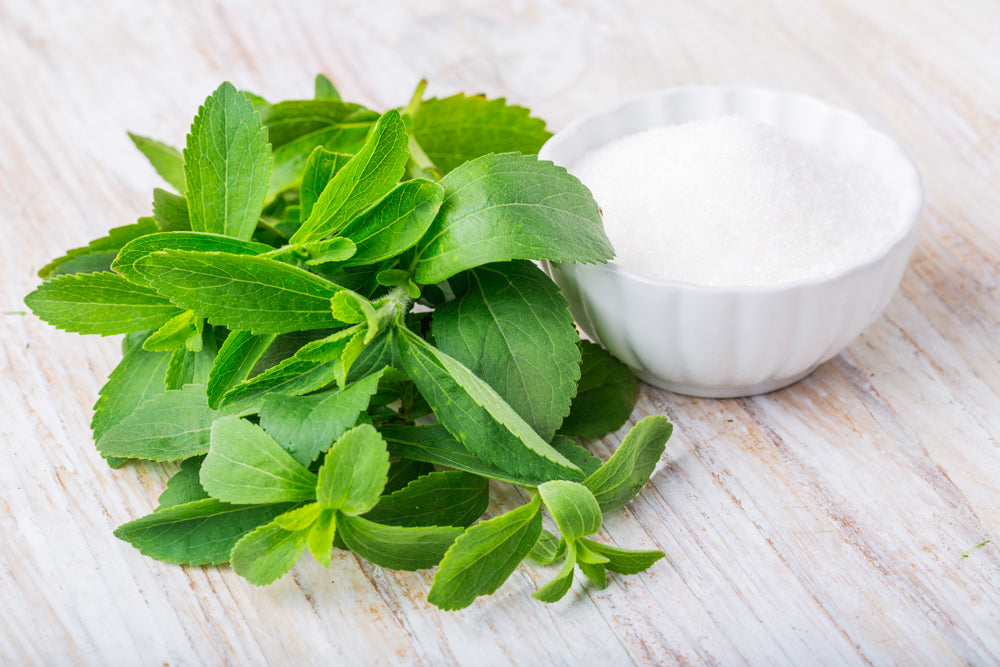
Ancient plants have been used by cultures around the world to aid and support dietary needs for centuries. Fast-forward to modern times, people are incorporating more plants into foods, drinks, and supplements in effort to achieve optimum health. As part of an ingredient spotlight, let’s take a deeper look at a commonly used herb that helps support a natural lifestyle.
This sweet leaf is today’s hot new diet fad to hit the shelves of grocery store and health food markets in snacks, foods, and supplements, but this centuries old herb has some history. Stevia Rebaudiana grows naturally in Brazil and Paraguay where for hundreds of years it has been used to sweeten foods, treat burns, and aid stomach discomfort.

Steviol Glycosides is the sweet component that is often extracted from the leaves. The process of extracting the glycosides starts with soaking the leaves in hot water. The leaves are also dried and ground into powder. However, Stevia leaves are sometimes just cooked or chewed raw. Stevia has a sweet licorice flavor that is naturally 100 – 300 times sweeter than traditional sweeteners.
Timeline…
Over 1500 years ago Guarani Indians use Kaa he-he (sweet herb) to sweeten bitter mate, a tea-like drink.
1887 - An Italian doctor hears his native guides describe the strange plant and has broken leaves sent to him and he announces discovery.
1899 – A Swiss botanist documents the plant and sweet taste in detail.
1918 – A botanist for U.S. Department of Agriculture learns of the sweet leaf and within 3 years the government and sugar producers start to take note of its commercial potential.
1931 – Two French chemists isolate the glycoside that gives the plant its sweet taste.
1970 – After strictly enforcing artificial sweeteners, Japan adapts stevia as alternate option.
1994 – Dietary Supplement Health & Education Act (DSHEA): Supplements are now regulated by the FDA for Good Manufacturing Practices.
FDA on Stevia
The Food and Drug Administration reviewed and regarded steviol glycosides as Generally Recognized as Safe (GRAS) and does not require approval to use as a food additive. Though stevia’s leaf and crude extract are not considered GRAS.

FDA on Stevia
The Food and Drug Administration reviewed and regarded steviol glycosides as Generally Recognized as Safe (GRAS) and does not require approval to use as a food additive. Though stevia’s leaf and crude extract are not considered GRAS.
SOURCES:
http://www.stevia.net
https://www.fda.gov/aboutfda/transparency/basics/ucm194320.htm
http://www.anh-usa.org/dshea/
http://www.huffingtonpost.com/2014/10/16/stevia-what-is-it_n_5983772.html
http://www.missouribotanicalgarden.org/PlantFinder/PlantFinderDetails.aspx?kempercode=e489
http://www.pfaf.org/user/Plant.aspx?LatinName=Stevia+rebaudiana
http://www.livescience.com/39601-stevia-facts-safety.html
http://www.medicalnewstoday.com/articles/287251.php

